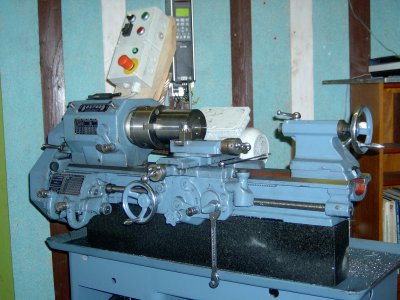- Joined
- Sep 20, 2012
- Messages
- 560
Hi Folks, I have the original cast iron legs for my Atlas lathe, I want to use them in preference to the bench I use now to add mass, mounted directly onto the legs the lathe will be a little too low for me so I need to raise it 2 1/2" or so and fit a chip tray.
I have noticed a lot of lighter lathes have a wooden work top between the lathe and the legs, some lathes in the original Atlas factory pictures are shown mounted in this way with thick wood beams fitted, so can anyone answer the following:
1. What is the purpose of this, is it to damp out harshness whilst linking to the mass through the hold down bolts?
2. The tops of the legs have hardly been finished at all, and are quite uneven, is the wood able take this up being softer?
3. How does the lathe stay in level when fixed this way as wood moves and changes with the weather?
4. If I make a 2" metal spacer do I need to put softening between it and the legs?
5. Just one more, I need a chip/oil tray under my lathe, how do users with wooden worktops keep them clean?
Sorry to be so dumb, but I'm a bit mystified by it all.
Bernard
I have noticed a lot of lighter lathes have a wooden work top between the lathe and the legs, some lathes in the original Atlas factory pictures are shown mounted in this way with thick wood beams fitted, so can anyone answer the following:
1. What is the purpose of this, is it to damp out harshness whilst linking to the mass through the hold down bolts?
2. The tops of the legs have hardly been finished at all, and are quite uneven, is the wood able take this up being softer?
3. How does the lathe stay in level when fixed this way as wood moves and changes with the weather?
4. If I make a 2" metal spacer do I need to put softening between it and the legs?
5. Just one more, I need a chip/oil tray under my lathe, how do users with wooden worktops keep them clean?
Sorry to be so dumb, but I'm a bit mystified by it all.
Bernard


